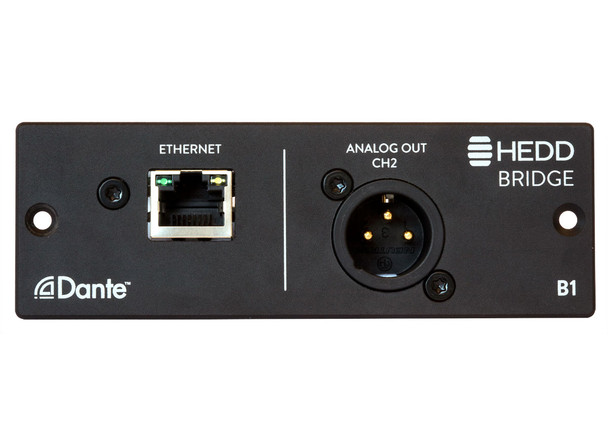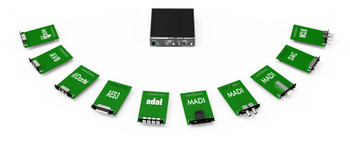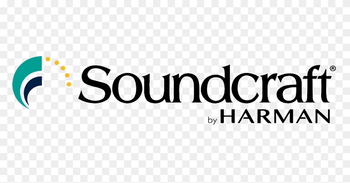Description
The HEDD Bridge – Paving the Way toward Digital Connectivity in Studio Monitors
Today, a number of digital protocols have become established constants in various audio sectors. While they certainly exhibit different advantages, they all essentially focus on the transportation of audio signals (Audio-over-IP, AES3, Bluetooth, etc.). In order to secure an ideal – future-oriented, safe, and flexible – integration of our HEDD studio monitors in digitally based work-spaces, we developed our very own modular input-card system, the HEDD Bridge. The HEDD Bridge was inspired by the rather simple and yet absolutely vital idea that our speakers should feature a freely configurable system that, being located on the back panel of each monitor, allows for the integration of a digital audio protocol.
Currently we are offering the B1-Dante card for the HEDD Bridge. We are convinced that Ethernet-based multi-channel systems are the future of the studio, live music, and installation sector. While Audio-over-IP has by now become more and more prominent in mix-down, interface, and microphone technologies, this development has yet to reach the level of studio monitors. The HEDD Bridge is the first system to close this gap.
The B1-Dante enables your HEDD monitors to interact with today’s most established audio network protocol:
- You can directly connect your computer to loudspeakers via a CAT.6 Ethernet cable in order to stream high resolution audio
- In complex multi-channel setups (Dolby Atmos, Auro 3D etc.), multiple separate loudspeakers can be fed with a single high-resolution audio stream and each one of these speaker channels can be controlled individually by software control applications
- Audio devices in different rooms or facilities (e.g. movie theaters, conference rooms, live concerts and music festivals) can be controlled from one or multiple workspaces connected to the Ethernet network
- AoIP will enable broadcast engineers to simplify the in-house signal distribution in broadcast stations












